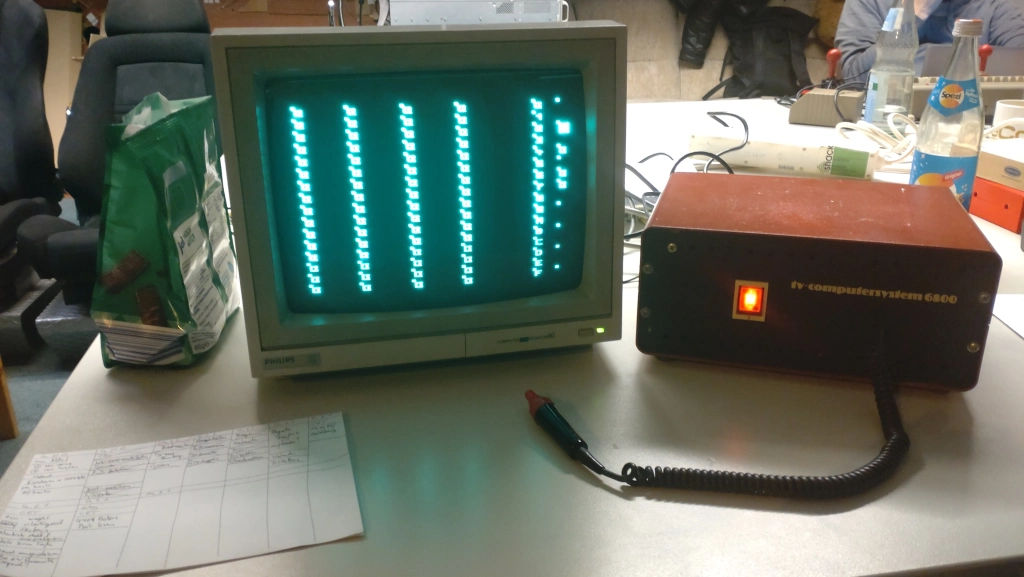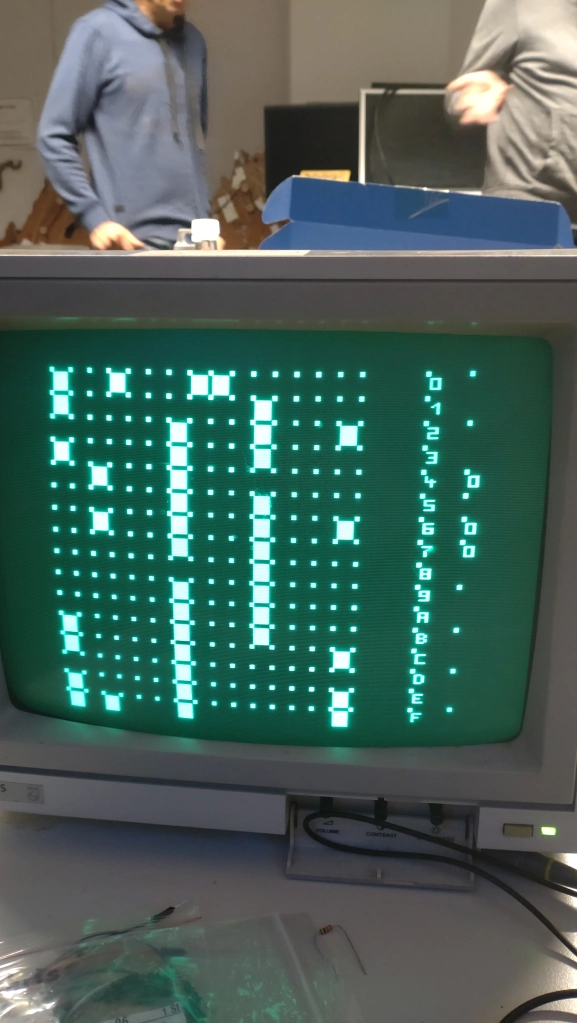I recently brought the tv-computersystem to a vintage computer meeting in Stuttgart, Germany (click here if you are interested) and learned a little bit more about this machine.
The computer works when switched on (after around 48 years…) without even having to replace capacitors. We could not find the channel on a TV that gave us a stable or even unstable picture (although one could see that there was something out there somewhere).
So, a participant (thank you so much, Joachim Oswald!) proposed to try to convert the signal that goes into the tv modulator into a composite monitor signal and started on this endeavour right away (my electronics “knowledge” is so limited that I cannot only sit next to a hardware wizard and bring coffee if requested). It turns out there is already such a signal available on the PCBs! All you have to do is to
- connect the (inner) pin of the cinch plug to Ground
- connect the (outer) ring of the cinch plug to the “MO” pad on the power-supply-and-modulator PCB (the brown PCB)
- Voila! Instant composite signal of a very good quality.


We experienced that the light pen did not work in the beginning, but increasing the intensity on the display did the trick (we used a green display where the bright parts might not be that bright as on a TV). Remember that the light pen will only work on a CRT display.
And now, for the first time, I could see a working tv-computersystem! I entered the first example program from the manual (adding two numbers) and it worked once I entered all needed values and selected “run”. The system is quite easy and smooth to use. The light pen works even a few millimeters above the CRT surface, and you can glide it easily from cell to cell. Together with the command to fill an entire memory page with the same value (that’s the first command on the top), entering values is quite fast (especially as you can enter hex digits), I imagine much faster than using switches and lamps.
I was now also able to (roughly) weigh the computer. It comes at about 3.5 kg in total.
weight
The last open question is about the clock speed the system uses. A M6800 of that era in a standard configuration would run at 1 Mhz, but I cannot confirm this yet. There is one quartz oscillator with 27 Mhz on a PCB (which seems to be a common sight at that time, especially for a device connected to a TV), but this cannot be simply divided down to 1 MHz by powers of 2, so this still is some sort of a mystery. There are circuit diagrams out there, I just did not have seen it yet. In the end, it does not matter that much on a device intended for teaching you how to program.
January 12, 2024 at 03:15 |
From my recollections, MC6800s of the time were often enough run at well under 1 MHz: around 750 kHz was common.
27 MHz divided by 32 gives 843.75 kHz, which is right in the 500-1000 kHz range you’d expect for early 6800 systems. But of course, they could be using other divisors in the chain.
I’d love to see a schematic for this, especially for the video front panel board.